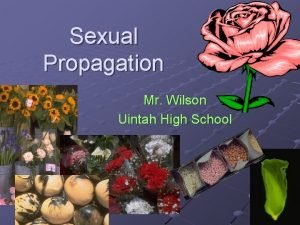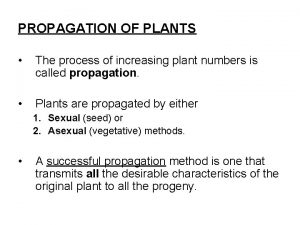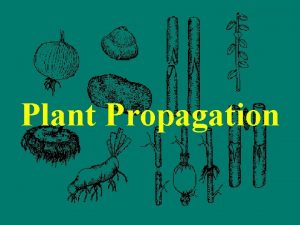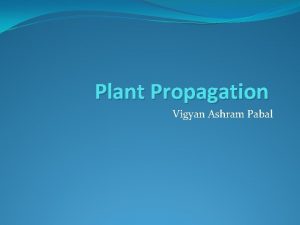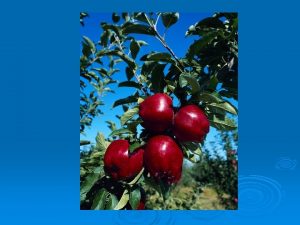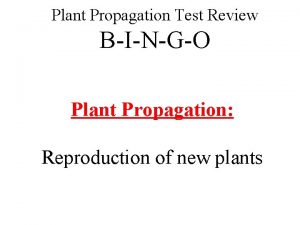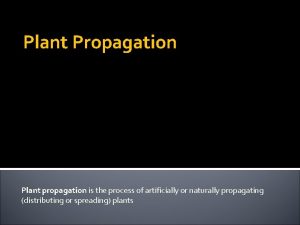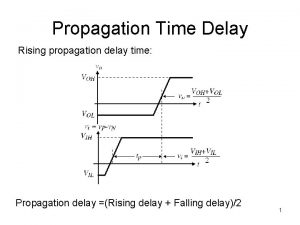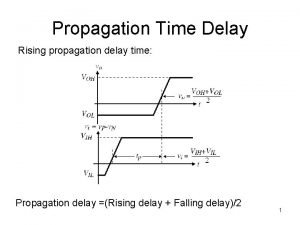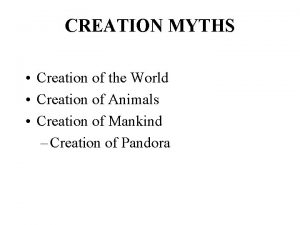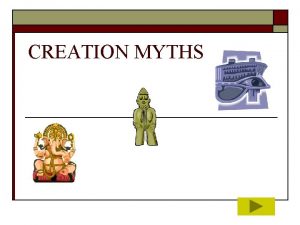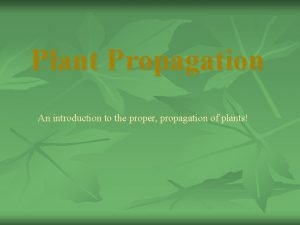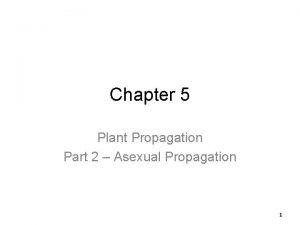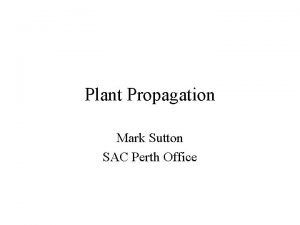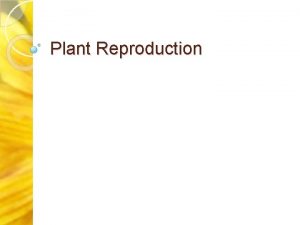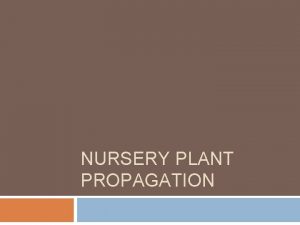PLANT PROPAGATION The creation of new life Propagation






















- Slides: 22


PLANT PROPAGATION The creation of new life! Propagation means to multiply or make new Propagation methods require: Knowledge Skill Practice Propagation is an ART!!

PROPAGATION METHODS Sexual propagation: Reproduction involving a female (egg) and male (pollen) sex cells to produce a seed Some plants can only be reproduced by seeds Cross-pollination is when one flower is pollinated by another flower with different characteristics Self-pollination is when pollen of the same plant is used

PROPAGATION METHODS Asexual propagation: Reproduction using cuttings from leaves, stems, or roots to make new plants Based on the principle of totipotency Allows the production of a CONSISTENT crop Totipotency is the ability of a single cell to divide and recreate another type of cell Creates a monoculture Only one plant variety is present in a particular environment

SEED GERMINATION As a seed germinates, or begins to grow, it will start to absorb water After the seed coat cracks, two things happen: The radicle, the plant’s first root emerges into the soil to serve as an anchor The plumule, also known as the shoot or seed bud, emerges from the soil Cotyledons, or seed leaves, emerge Dicotyledons: plants with two cotyledons – Example: Beans Monocotyledons: plants with one codyledon – Example: Corn


GERMINATION CONDITIONS The seedbed is the soil or medium in which seeds are sown The seed has requirements for: Temperature Wind tolerance Insects and pests Moisture Exposure to light Air circulation Planting depth Placing between seeds

DORMANCY Two methods of breaking seed dormancy: Scarification: The process of slightly damaging or breaking the tough seed coat which allows water penetration into the seed Example: Rubbing seed against sand paper, a file, or a rough surface Stratification: A cold treatment process given to some seeds to complete ripening and overcome dormancy Seeds are place in a plastic bag inside a refrigerator around 36 -38° F

METHODS OF SEEDING When propagating by seed, you must think of the appropriate method: Indirect seeding: Seeds are first planted in pots or containers Direct seeding: Seeds are planted directly into the garden When seeds planted indirectly, they must be transplanted Transplanting: To move a plant from one location and plant it in another

METHODS OF DIRECT SEEDING Furrow method: narrow grooves are made into the soil Broadcasting: sprinkling the seeds across a given area Individual method: placing the seeds in the soil or media by hand Can be done by hand or automated equipment Large commercial operations Specialized growing

AFTER SOWING SEEDS Make sure to place an identification marker!! Name of seed and date sown Lightly mist the media until damp In order to retain moisture, plastic wrap can be applied over the top of the flat Make sure to harden-off plants grown indoors before moving them outside Hardening-off: process where young plants receive less care and a greater range in temperatures in order to acclimate them to living outside

TYPES OF AVAILABLE SEEDS Seed selection is VERY important Seeds are labeled with: Name of the plant Expiration date Germination percentage Plant seed percentage Inert material percentage The germination rate is the amount of seeds that are expected to germinate Inert material may be weed seeds or plant material

ROOT PROMOTION IN ASEXUAL PROPAGATION Asexual propagation is like cloning plants Having an appropriate rooting medium is important A sterile mix, free of diseases or pests Horitcultural sand Moss – Peat and sphagnum Vermiculite Perlite Often cuttings are grown in a mixture of these

ASEXUAL PROPAGATION Temperature is important Some plants prefer bottom heat which is artificial heat that keeps the soil or media warm Moisture and light exposure also significant Cuttings can be taken from different plant growth Softwood: New plant growth Hardwood: Older growth on a woody plant

STOCK PLANT To give cuttings the best start, the stock plant, or main plant the cuttings are taken from should be: Healthy specimen Free of insects and disease Take cuttings from the top of the plant which is often younger, cleaner, and healthier Auxin is sometimes required in asexual propagation for root development

METHODS OF ASEXUAL PROPAGATION Cutting: a process where part of the stock is cut off in order to reproduce a new plant Stem cutting: Requires at least 3 nodes per cutting Tip cutting: Cutting from the tip of the stem Leaf cutting: a leaf, a leaf and petiole, or a portion of a leaf is taken from the stock plant Polarity: Tendency of a cutting to develop roots from the bottom and sprouts from the top Leaf-bud cutting: Cutting of a bud and node Root cutting: Cuttings from roots

LAYERING

METHODS OF ASEXUAL PROPAGATION Division: Process of dividing plant that spread underground Example: Iris, daylily, ferns Separation: Process of propagating plants that spread by aboveground stems or bulblets Example: Spider plant Tissue Culture: Cloning plants from genetic material

GRAFTING Grafting: Attaching twigs, buds, or roots onto other stems or roots The two plants must be closely related for the plants to fuse Scion: Portion of the plant attached during grafting Rootstock: The lower portion of the plant that receives the graft or bud Interstock: A twig that is grafted between the scion and rootstock


BUDDING METHODS Budding: A form of grafting where a bud is attached to stock plant by various means to produce a more desirable plant A budstick twig is used as a source of buds Patch method Chip bud T-bud

OTHER TYPES OF GRAFTING Whip and tongue Bark graft Slipping bark: When the cambium is actively growing and can be pulled back easily Approach Four-flap grafting
 Objectives of plant propagation
Objectives of plant propagation Advantages of plant propagation
Advantages of plant propagation Tip layering plants examples
Tip layering plants examples New creation united methodist church
New creation united methodist church Secondary brand associations meaning
Secondary brand associations meaning New creation theology
New creation theology Objective of plant breeding
Objective of plant breeding Plant introduction in plant breeding
Plant introduction in plant breeding Plant introduction in plant breeding
Plant introduction in plant breeding Tronsmo plant pathology and plant diseases download
Tronsmo plant pathology and plant diseases download Tronsmo plant pathology and plant diseases download
Tronsmo plant pathology and plant diseases download Tronsmo plant pathology and plant diseases download
Tronsmo plant pathology and plant diseases download Hát kết hợp bộ gõ cơ thể
Hát kết hợp bộ gõ cơ thể Ng-html
Ng-html Bổ thể
Bổ thể Tỉ lệ cơ thể trẻ em
Tỉ lệ cơ thể trẻ em Chó sói
Chó sói Glasgow thang điểm
Glasgow thang điểm Chúa yêu trần thế
Chúa yêu trần thế Môn thể thao bắt đầu bằng từ đua
Môn thể thao bắt đầu bằng từ đua Thế nào là hệ số cao nhất
Thế nào là hệ số cao nhất Các châu lục và đại dương trên thế giới
Các châu lục và đại dương trên thế giới Công của trọng lực
Công của trọng lực
